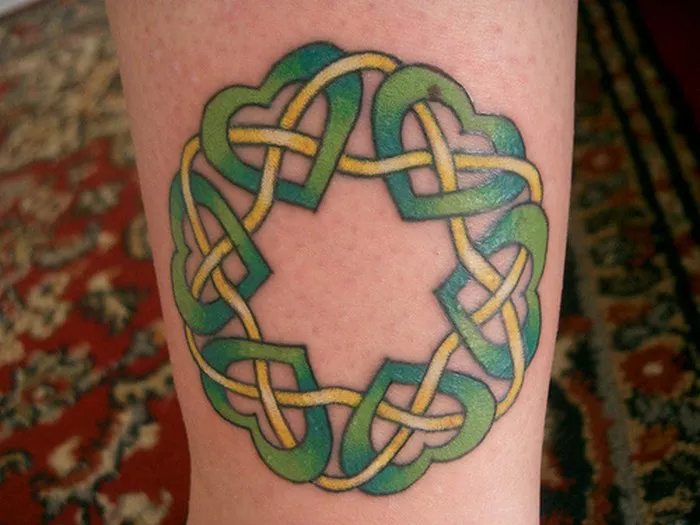In the world of body art, Celtic tattoos stand out as iconic symbols of cultural heritage, intricate design, and profound meaning. Originating from the ancient Celtic tribes of Europe, these tattoos have transcended time and geographical boundaries to become a cherished form of self-expression for people around the globe. From their rich history to their enduring symbolism, Celtic tattoos hold a unique importance that resonates with individuals seeking to connect with their roots, express their identity, and adorn their bodies with timeless artistry.
Exploring Celtic Heritage: A Journey Through Time
To understand the significance of Celtic tattoos, one must delve into the rich tapestry of Celtic heritage that spans centuries of history. The Celts, a diverse group of tribal societies, inhabited regions of Europe from as early as the Bronze Age. Renowned for their craftsmanship, spirituality, and warrior culture, the Celts left an indelible mark on the cultural landscape of the ancient world.
Central to Celtic society was a deep reverence for nature, reflected in their intricate knotwork, spirals, and zoomorphic designs. These motifs, often found in Celtic artwork and illuminated manuscripts such as the Book of Kells, symbolized interconnectedness, continuity, and the cyclical nature of life. Through their art and symbolism, the Celts celebrated the beauty and mystery of the natural world, forging a spiritual connection that endures in modern interpretations of Celtic tattoos.
The Symbolism Behind Celtic Tattoos: Decoding Ancient Meanings
At the heart of every Celtic tattoo lies a rich tapestry of symbolism and meaning, each motif imbued with centuries-old significance. The intricate patterns of Celtic knots, for example, represent the eternal cycle of life, death, and rebirth, with no beginning or end. These interwoven designs, characterized by their endless loops and complex interlacings, symbolize the interconnectedness of all things and the eternal journey of the soul.
Similarly, Celtic animal symbols such as the Celtic wolf, stag, or dragon hold deep cultural significance, embodying qualities of strength, wisdom, and resilience. These creatures, often depicted in stylized forms within Celtic artwork, serve as totems of power and guardians of the natural world. By adorning their bodies with these symbols, individuals pay homage to the spirit of their ancestors and embrace the timeless wisdom of Celtic lore.
Personal Expression and Identity: The Modern Appeal of Celtic Tattoos
While rooted in ancient tradition, Celtic tattoos continue to captivate the modern imagination, serving as a canvas for personal expression and individual identity. In an era marked by globalization and cultural exchange, these tattoos offer a unique opportunity for individuals to reclaim their heritage and celebrate their roots. Whether of Celtic descent or simply drawn to the mystique of Celtic culture, people from all walks of life are drawn to the timeless allure of Celtic tattoos.
For many, getting a Celtic tattoo is more than just a fashion statement—it’s a deeply personal journey of self-discovery and empowerment. Each symbol chosen carries its own significance, reflecting aspects of the wearer’s personality, beliefs, and life experiences. From intricate Celtic crosses symbolizing faith and spirituality to elaborate knotwork patterns representing unity and interconnectedness, every tattoo tells a story—a story that is as unique as the individual who bears it.
Preserving Tradition in a Modern World: The Role of Celtic Tattoos
In an age of rapid change and technological advancement, the importance of preserving cultural heritage has never been more vital. Celtic tattoos serve as a powerful bridge between past and present, honoring the traditions of our ancestors while embracing the diversity of contemporary society. By keeping alive the ancient art of Celtic tattooing, we pay homage to the resilience and ingenuity of the Celtic people, ensuring that their legacy endures for future generations to appreciate.
Moreover, Celtic tattoos serve as a reminder of the universal themes that unite humanity across time and space. In a world often divided by cultural, religious, and political differences, these symbols of interconnectedness and unity offer a glimmer of hope and solidarity. By wearing a Celtic tattoo, individuals signal their allegiance to a shared heritage and a collective vision of peace, harmony, and mutual respect.
Conclusion: The Enduring Legacy of Celtic Tattoos
In conclusion, Celtic tattoos occupy a unique and esteemed place in the realm of body art, combining ancient symbolism with modern aesthetic sensibilities. From their origins in the mists of Celtic history to their enduring popularity in contemporary culture, these tattoos continue to captivate and inspire people around the world. Whether as a celebration of heritage, a form of personal expression, or a tribute to the timeless wisdom of Celtic lore, these tattoos hold a special significance that transcends borders and generations.
As we journey through life, may we carry with us the spirit of the Celts—their reverence for nature, their commitment to community, and their belief in the interconnectedness of all things. And may our Celtic tattoos serve as a reminder of the enduring legacy of this ancient culture—a legacy of beauty, strength, and resilience that continues to inspire us today and for generations to come.

